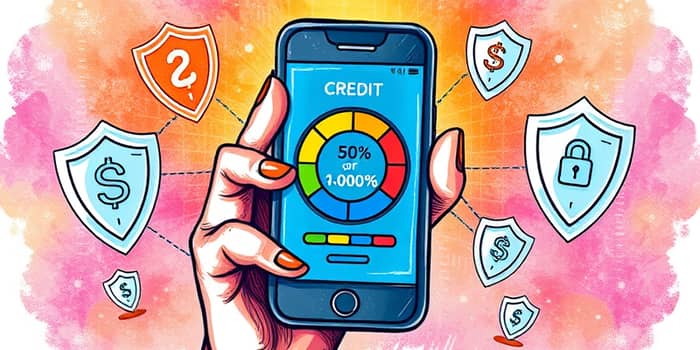
In the digital age, credit health can make or break major life decisions, from securing a mortgage to qualifying for competitive interest rates. Traditional annual credit reports are no longer sufficient for proactive management. Thanks to seamless fintech integrations, consumers can leverage real-time credit score insights directly within their favorite apps. This article explores how users can transform static credit data into a dynamic tool for financial security, empowering them to spot issues, take corrective action, and build stronger credit profiles.
In-app credit health monitoring refers to the integration of credit reporting and scoring services into mobile applications. These tools aggregate data from major credit bureaus and present it in a user-friendly dashboard. Services like DailyPay’s Credit Health allow individuals to view their current FICO or VantageScore at any moment, without impacting their score. This integration is becoming ubiquitous in banking, payroll, and personal finance apps.
By embedding credit monitoring into everyday platforms, fintech innovators ensure that users receive free ongoing access to credit without fees. Instead of logging into multiple websites or waiting for monthly statements, users tap a menu option within their app and immediately access the latest updates. Behind the scenes, the tool performs a “soft inquiry,” safeguarding the user’s credit rating.
Many apps also include educational modules, offering articles and tutorials that demystify complex scoring factors like utilization ratios, length of credit history, and new account openings. This combination of data and guidance forms the backbone of modern credit health solutions.
Credit health is a direct reflection of your financial behavior. Late payments, maxed-out cards, and an abundance of recent credit inquiries can all drag scores downward. According to Experian, the average U.S. credit score reached 714 in 2023, underscoring the importance of maintaining—or improving—your standing to qualify for favorable loan terms.
Proactive monitoring delivers several key advantages. First, it provides greater peace of mind during major transactions by showing your credit status in real time, which reduces anxiety when applying for leases, auto loans, or lines of credit. It also fosters heightened awareness of negative trends such as creeping credit utilization, enabling you to address issues before they escalate. Finally, empowered decision-making helps you time major purchases or credit applications when your score is at its peak.
By keeping an eye on shifting factors, you can make strategic choices like paying down balances proactively or postponing a loan application until your score recovers. This level of insight separates financially resilient individuals from those caught off guard by unseen credit changes.
Comprehensive in-app credit health solutions pack an array of features designed to inform and protect. The table below summarizes the most common functionalities:
Each feature contributes to an ecosystem that keeps the user informed, ready to act, and protected against emerging threats. Together, they form a robust financial wellness framework that adapts to every credit profile.
In one case study, a user discovered a fraudulent hard inquiry within a day of occurrence and prevented an unauthorized credit card from being issued. Their swift action, guided by the app’s dispute workflow, kept their score intact and avoided potential financial loss.
Alerts without action are like warning lights ignored on a dashboard. When an app notifies you of a new account opened in your name or a spike in credit utilization, the window to intervene is often narrow. Acting immediately—whether by contacting your credit bureau, calling the creditor, or freezing your file—can significantly reduce the fallout from identity theft or reporting errors.
Research from Javelin Strategy & Research indicates that over 15 million Americans fell victim to identity theft in 2022, with losses exceeding $20 billion. In-app monitoring cuts the average detection time from weeks or months to mere hours, enabling consumers to stay one step ahead of fraudsters.
For many, the free version meets essential needs, but users with extensive credit portfolios or heightened risk factors may prefer the added security layers of premium subscriptions.
Confidentiality is paramount. Trusted apps use encryption and multi-factor authentication to safeguard credit data. They also emphasize that user data remains private and secure, never shared with employers or external advertisers. Soft pulls conducted by such tools ensure that frequent checks do not lower your credit score, enabling continuous transparency without penalty.
Ethically, expanding access to credit health monitoring fosters financial inclusion, especially for underserved communities. By providing no-cost or low-cost platforms, fintech companies contribute to leveling the economic playing field, inspiring a generation of empowered, credit-savvy consumers.
By following these steps, users unlock continuous credit vigilance and control, transforming their financial outlook and securing better terms on loans and lines of credit.
In-app credit health monitoring is not just a convenience—it is a strategic tool for safeguarding financial health. With real-time credit score tracking and proactive alerts at your fingertips, you can detect fraud early, correct mistakes swiftly, and achieve lasting credit improvement. Embrace this technology today to take timely action and build a resilient financial future.
References













